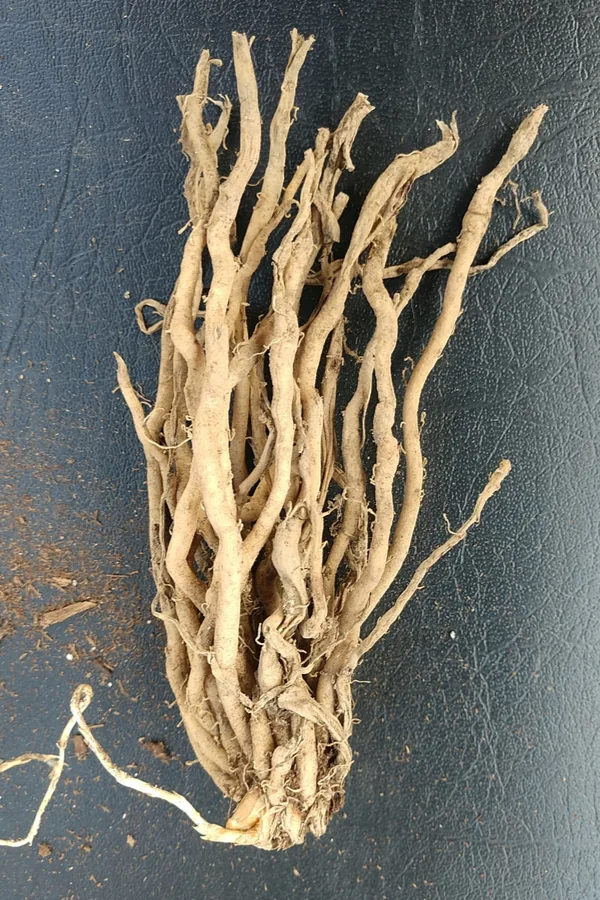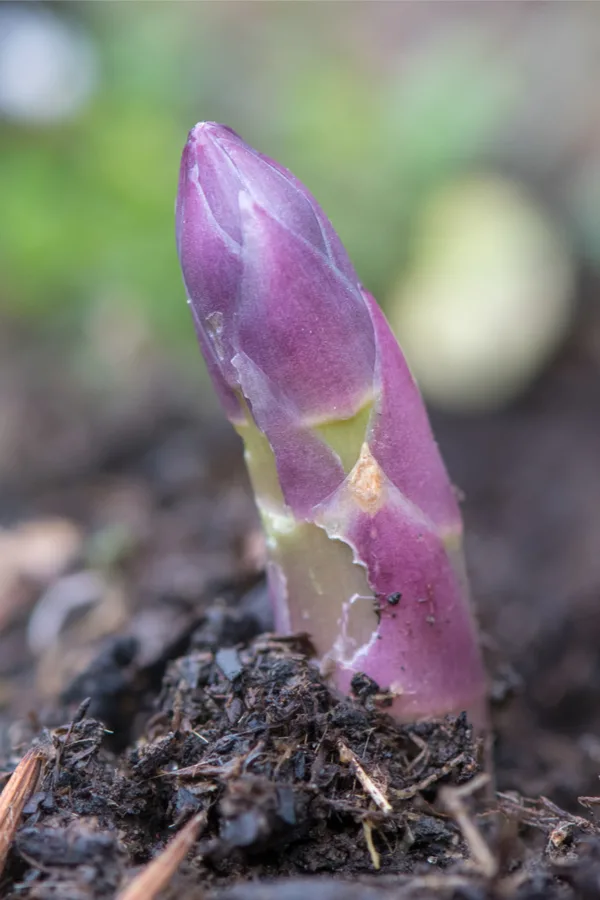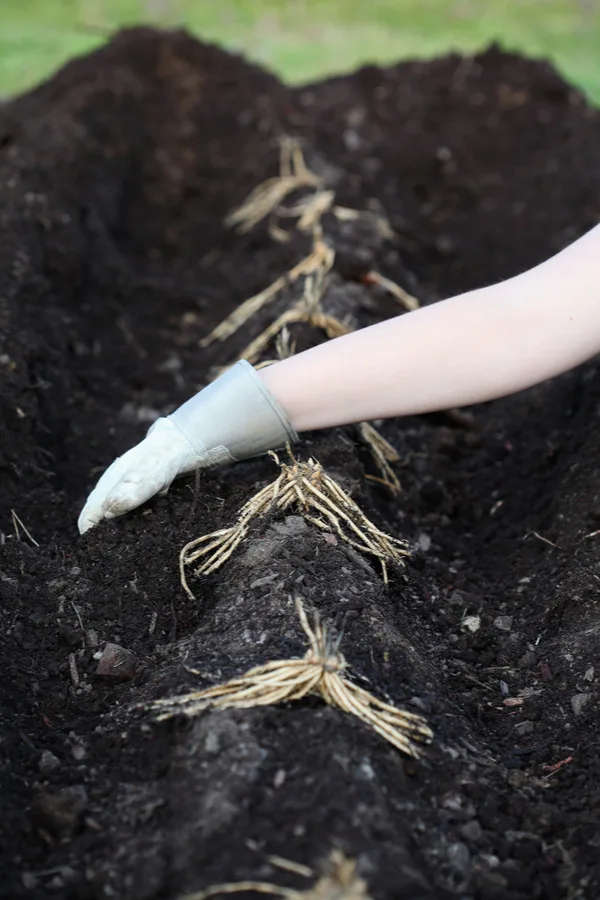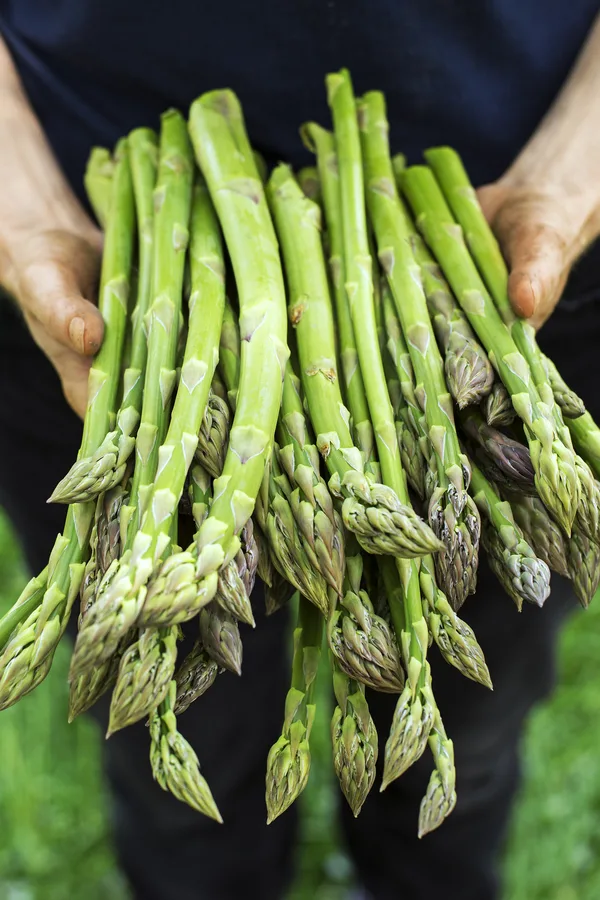This week’s how-to garden article and corresponding podcast is all about the secrets to growing asparagus. When you plant and grow asparagus, you are creating a wondrous food source for years to come!
Asparagus grows as a perennial, unlike traditional garden crops such as cucumbers, peppers or tomatoes. In fact, once established, asparagus provides an excellent crop for up 20 to 25 years.
And the best part of all, armed with a few planting and maintaining secrets, it’s quite to easy to plant and grow! Feel free to listen in to our complete podcast below on planting and growing asparagus, or read on for an in-depth look at the specifics of planting, maintaining and harvesting your very own delicious crop of asparagus!
The Secrets To Growing Asparagus
Asparagus is started by seed, or from crowns. Crowns are the roots of 1 to 2 year-old asparagus plants. Of both methods, crowns are the easiest to plant, and the fastest way to grow a harvestable plant.
When you grow asparagus from seed, it can be a long process. How long? As many as 2 to 3 years before the tiniest of edible spears form.
Planting asparagus by seed is also harder to maintain the first few years. As the tiny shoots appear, they can easily be snuffed out by weeds. And, they can also easily be mistaken and pulled when weeding.
For this reason, most gardeners prefer to plant crowns. Asparagus crowns can begin to be harvested and enjoyed by the second growing season – and maybe even a spear or two in the first year. They are also much easier to start and maintain.

Asparagus crowns, by their very nature of being older, are more defined early on. It results in a crop that is easier to locate in the rows for chores such as watering, weeding and fertilizing.
What To Plant – The Secrets To Growing Asparagus
How Asparagus Grows
Asparagus plants will be either male or female. They can both be harvested and consumed, but there is a difference between the the two.
Male varieties of asparagus tend to be larger and have more abundant spear production. Female varieties tend to be smaller in both height and circumference. Females also produce seeds in the fall for reproduction.
Because of the larger size and production levels, male varieties are usually the preferred planting choice for a home garden. Unlike many other plants with female and male species, you do not need to have a male and a female plant near each other for the plants to produce their spears.
Planting Seeds vs. Crowns
Planting Seeds
- Long time to mature
- 3 to 5 years before a good crop can occur
- Extremely hard to keep weeded when little
Planting Crowns
- Asparagus crowns give you a jump on harvesting
- Asparagus crowns can begin to be harvested and enjoyed enjoy by the second growing season
- Much easier to start and maintain
Best Varieties For Planting – The Secrets To Growing Asparagus
How To Plant – The Secrets To Growing Asparagus
With a long crop cycle of 20 or more years, it is important to prepare your bed space with long-term nutrients. Although you can fertilize and add nutrients in future years, giving the crowns a rich, well-draining soil at the start is one of the biggest keys of all to success.

Begin by working in generous amounts of compost to the soil. For each crown you will be planting, add in a few shovels of compost to the area. Be sure to mix the compost well with the soil to blend it all together. If your soil is extremely hard or clay-like, add in a few shovels of sand to help with drainage.
Planting Keys For Asparagus:
- Rich soil, well draining – avoid low lying areas
- Full sun is best – 8 hours of sun for maximum spear production
- No less the 5 to 6 hours, just too many issues with proper spear production.
- Work in compost, lots of compost!
- If you have hard pan or thick soil, add a bit of sand to help
Planting With The Trench Method
Planting asparagus is best done using what is known as the trench method. To plant, begin by digging a trench 6″ deep and 8″ wide in the soil.
Next, place crowns at the bottom of the trench, water in, and cover with about 2″ of topsoil. Allow about 18″ between crowns, and 12″ between rows.

As the crown begins to grow through the soil, keep adding a few inches of soil, filling in the trench slowly. Eventually, the trench will fill in completely over the course of a few weeks.
Maintaining The Crop – The Secrets To Growing Asparagus
The general rule-of-thumb is to start harvesting the spears the following spring after planting. Some do harvest a few big spears the first year, but you are better off to let the energy develop to the roots.
The second year, you can harvest a few. Harvest two to three spears per plant over a two to three week period. Only harvest stalks larger than a pencil in thickness. Let all other smaller ones grow into ferns in order to be ready for the next harvest.
Harvest the spears by cutting them off with a sharp knife just below the soil line. You can snap off the spears as well, but we always prefer a sharp knife. The knife helps in keeping a clean cutting end, and also helps in keeping the crowns safe from any pulling to harvest.

Every spring thereafter, harvest the spears that measure about 3/8″ in diameter and 6″ to 8″ tall. The harvest after year two and beyond will usually last for four to eight weeks. Harvesting should end when most of the spears that are left are small and have their tips open.
Keys To Success – The Secrets To Growing Asparagus
The biggest key to growing asparagus successfully is to keep your beds weed free.
Weeds and grass compete for valuable nutrients, and a weed-filled bed will result in smaller, less productive harvests.
Straw works well as a year round mulch. To keep beds productive, add an inch or two of compost as a top dressing each fall before mulching.
Here is to enjoying a long-lasting perennial harvest of Asparagus in your home garden!
LINKS FROM THE SHOW – The Secrets To Growing Asparagus
Article Links :
How To Make Incredible Compost
The Secrets To Making Compost Tea
Follow Our Facebook Page For Even More Great Tips! Simple Garden Life Facebook Page
Simple Garden Life is a website dedicated to keeping gardening fun, simple and enjoyable! We publish two new articles each week along with a new garden podcast episode every two weeks. This article may contain affiliate links.
